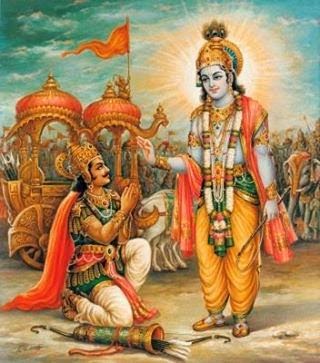Srimad Bhagavadgeeta :Ch-13. Slo-6 & 7.

Thursday, May 29, 2014. Srimad Bhagavadgeeta : Chapter-13. ( Khetra-kshetrajna-vibhaga-yogam ) Slokam- 6&7. 6- Mahabutaniahankarah bhuddhiraviyaktameva ca, Indriyani dasaikam ca panchendriyagocarah. Mahabutani = Five elements ( Akasam, vayu, agni, jalam, bhumi. ); Ahankaram = False ego ( A sense of "karthrutva- bhoktyatva-abhimanam" ); Bhuddhi Avyaktam = Intelligence, Vasana; Dhasa indriyani = Ten indriyas; Ekam = Mind; Pancha indriya gocarah = Five indriya vishayas ( objects : form, sound, taste, smell, touch. ), thus, cosisting of 24 tattva-s. (7)- Iccha dveshah sukam dukham samkhatascetana drutih, Etat kshetram samasena savikaramudahrutam. Etat






.jpg)